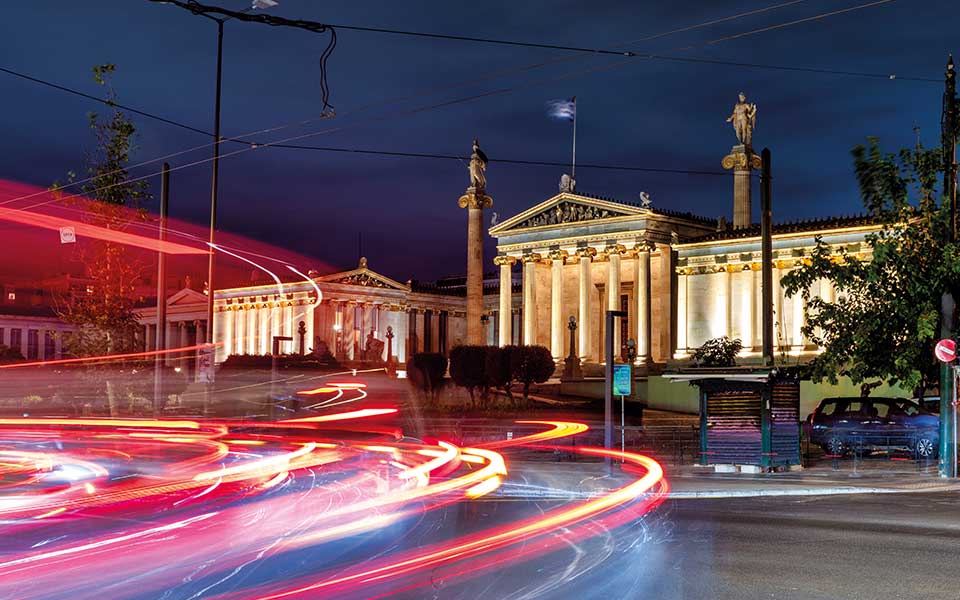Winter may be Athens’ finest season of all. Free of the summer crowds, the vibrant streets reflect the city’s true colors. Athens’ relatively compact urban center is a fascinating study in contrasts – ancient monuments and contemporary art galleries, cosmopolitan elegance and old commercial arcades, street art and high fashion. Wherever you find yourself, you’re never far from a glass of good wine, a sweet treat, or a tempting bite, be it a sit-down meal of modern Mediterranean bistro fare or a true Athenian-style souvlaki wrapped in a pita and enjoyed on the go.
Best of all, though, this is the season when Athenians enjoy their own city the most. The cultural calendar swells with exhibitions, concerts and theatrical performances. Friends meet for coffee under the Attic sun. Antique stores and charming vintage shops are ripe for leisurely browsing. In winter, the city is most truly itself. To help you take full advantage of this quieter season and discover some classic Athens features – what residents adore most about their city – we’ve chosen some destinations for you to explore.
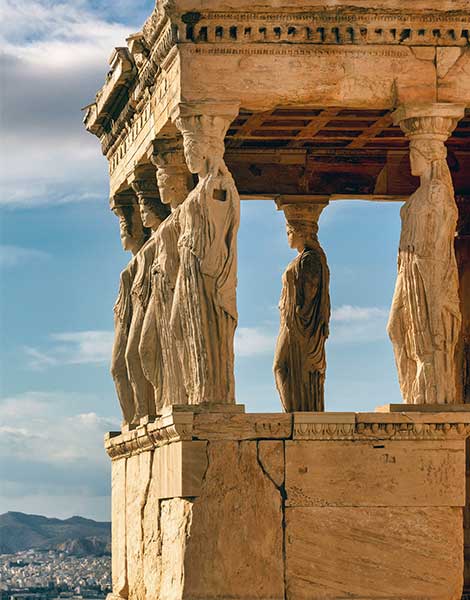
© Perikles Merakos
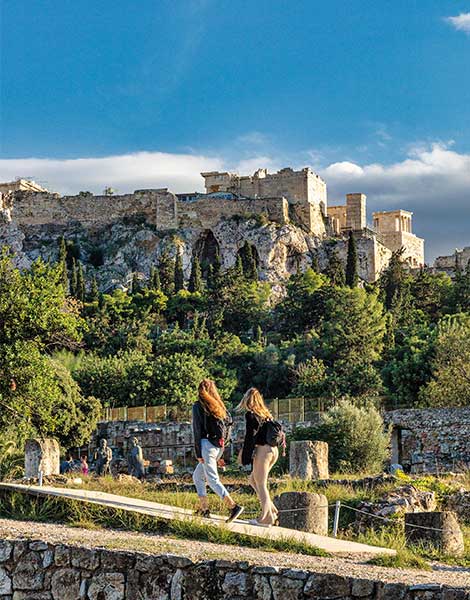
© Perikles Merakos
Acropolis area
Visiting the Parthenon for the first time is a momentous occasion, although the same is true for the fifth – or even fiftieth – time. When relative peace descends upon the historic monuments during the cooler months, the early hours of the day reveal its majesty and magic. Purchasing timed tickets in advance through hhticket.gr simplifies things and makes what will be a profound experience easier to access. Licensed tour guides, who can be hired on-site or via tourist-guides.gr, are extremely useful in helping visitors fully comprehend this historical marvel.
Mid-morning finds the district of Koukaki, nestled at the southern foothills of the Acropolis, buzzing with activity. A ritualistic stop at neighborhood landmark Takis Bakery (13 Misaraliotou) for a “kourou” cheese pie (a buttery shortcrust pastry), a quintessential Athenian breakfast treat, is the ideal way to start the day’s adventures.
A leisurely stroll to the Ancient Agora is like embarking on a historical odyssey; you pass iconic locations such as the Acropolis, Areopagus Hill, Filopappou Hill, and the Pnyx. Pedestrianized Dionysiou Areopagitou, named after Athens’ patron saint, is a popular and picturesque thoroughfare. Adjacent shaded paths leading to the Church of Demetrios Loumbardiaris reveal landscaping artistry that seamlessly integrates the walkways with the surrounding natural splendor. Conceived in the 1950s by visionary architect Dimitris Pikionis, the intricately designed, asymmetrical paving, crafted from repurposed stone, appears to be an organic extension of the landscape – a testament to the mastery of the stonemasons involved.
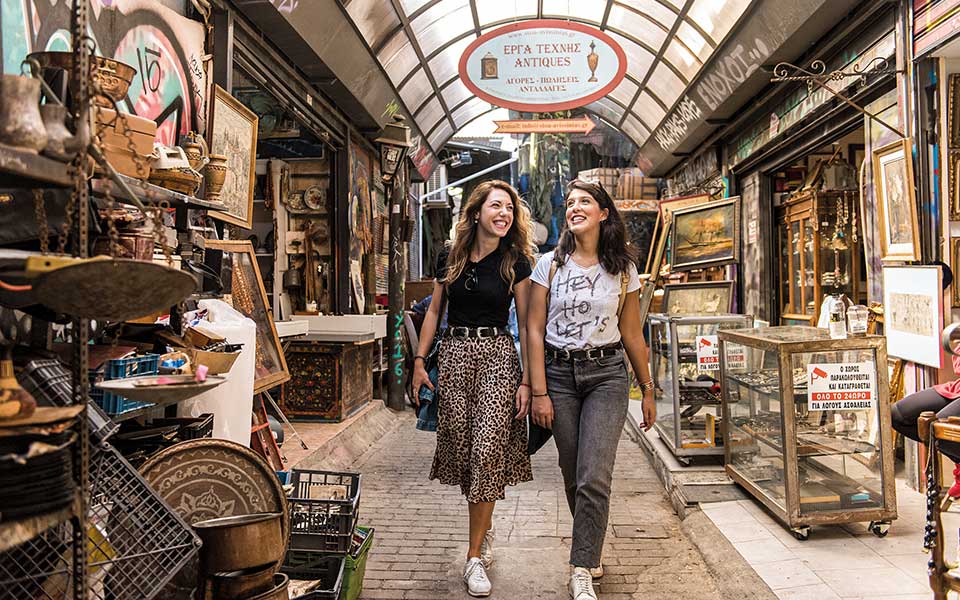
© Thalia Galanopoulou

While the Parthenon captures the majesty of Classical Athens, the Ancient Agora illuminates it in fascinating detail. This was the religious, cultural, social, and commercial center of Athenian life and the seat of politics, administration, and justice. Among the many highlights of the large site are the ruins of the Bouleuterion (the 500-member senate, or “Boule”), the Tholos (the Boule’s executive committee), and the Temple of Hephaestus. In use as a Christian place of worship for centuries (beginning in the 7th century and continuing through the Ottoman era as the Church of St. George Akamas), the temple is essentially intact; Otto, the first King of Greece, was welcomed in a ceremony here in 1834. A licensed guide can add to the experience (tourist-guides.gr).
The Ancient Agora borders one of Athens’ liveliest districts. For many, Monastiraki, or “Little Monastery,” named for a monastic institution of which only the 10th-century Pantanassa basilica remains, is synonymous with second-hand items and antiques, from the cheerful jumble of sidewalk stalls in Avissinias Square to finer pieces at specialist shops. The scent of leather bindings greets you at Korovessis (7 Adrianou), specialists in rare books, maps, and works on paper. Martinos (50 Pandrossou) offers a beautiful selection that includes European antiques, Çanakkale pitchers, Greek fine art, 19th-century Philhellenic collectibles, and 20th- and 21st-century design pieces.
As we approach Athinas Street, Athens’ pleasingly chaotic commercial thoroughfare for baskets, birdcages, and everything else for the home, it may be time for a traditional Greek coffee. Mokka (44 Athinas), a century-old coffee roastery, is just the place. The coffee is prepared in a “briki” – a long-handled copper pot – nestled in hot sand. The Varvakios Central Market, with its clamorous charm, is just steps away and certainly worth a visit (as long as you haven’t worn your best shoes). For a special treat, head towards Syntagma and join the line waiting for souvlaki at Kostas (7 Filellinon), a local favorite since 1950.
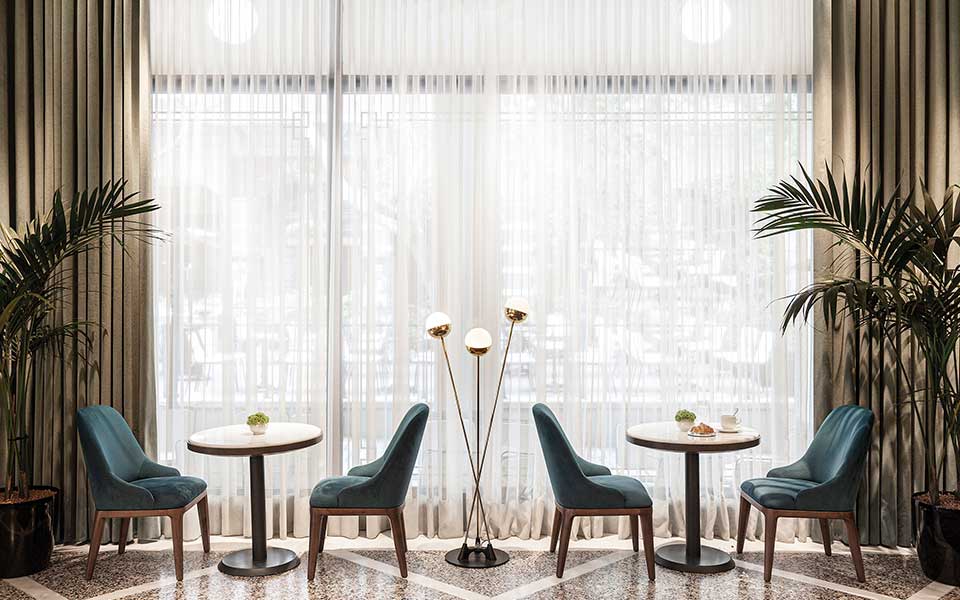
© Perikles Merakos
Around Syntagma
Coffee with class
Since a café named Zonar’s first opened here in 1939, this prime spot, now home to Athénée (9 Voukourestiou), has been cherished by generations of distinguished Athenians and visitors. Nobel laureate Odysseas Elytis, the composer Manos Hatzidakis, and icons such as Melina Mercouri and Sophia Loren have all passed through its doors, leaving behind a lasting cultural legacy. Its Art Deco ambiance continues to exude timeless allure, and it remains a favorite haunt of luminaries today. The establishment offers a superb variety of coffees and meals throughout the day. Situated on one of the busiest streets in Athens, this place is perfect for enjoying the rhythm and spirit of the bustling city.
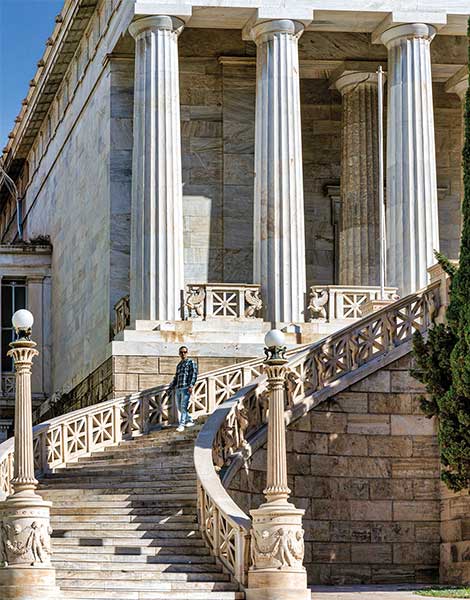
© Perikles Merakos
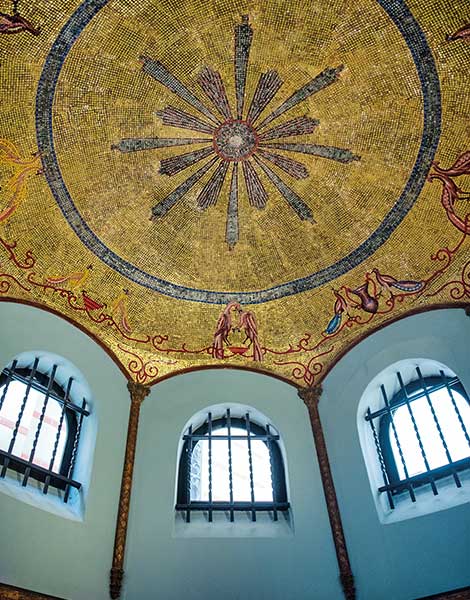
© Perikles Merakos
Neoclassic identity
The stretch of the city between Syntagma and Omonia squares is cherished for other reasons as well. Over a few decades in the 19th century, King Otto’s lavish building program transformed what had been a small village into an impressive European capital. Amid the glory of Ancient Athens, Neoclassicism came to represent the nation’s new spiritual and cultural identity. Just steps from Athénée are some of the finest examples of this movement, beginning with the fanciful Illiou Melathron (1879), initially built by Ernst Ziller for Heinrich Schliemann, the archaeologist who combined myth and history in his excavations of Mycenae and Troy (“Illion”), but which now houses the Numismatic Museum (12 Panepistimiou).
A short walk down Panepistimiou Street, past the fine neo-Renaissance Catholic Cathedral of St. Dionysius the Areopagite (Leo von Klenze and Lyssandro Kaftantzoglou), brings us to what is popularly known as the Athenian Trilogy, a photogenic complex consisting of the National and Kapodistrian University of Athens (the first university in the Balkans and Eastern Mediterranean), the Academy of Athens, and the Vallianeio Megaro (the National Library). The University is the work of Christian Hansen, appointed court architect in 1834, while the Academy and Vallianeio Megaro were designed by his brother, Theophil Hansen. The nearby Ziller Mansion provides a more intimate Neoclassical experience. Now known as the Loverdos Museum (6 Mavromichali), it’s home to one of Greece’s most important collections of post-Byzantine religious art. The frescoes and intricate floor mosaics are as noteworthy as the fine artworks.
Just around the corner, Politeia (1-3 Asklipiou), a favorite haunt of intellectuals, art lovers and bibliophiles, offers selections on a wide range of subjects and boasts a well-informed staff. Whether you’re looking for a copy of Cavafy in Greek and French, the new Wilson translations of the Iliad and the Odyssey, or a book on modern Greek architecture, you won’t leave empty-handed. If you’d like to browse further, there are plenty of dealers in rare and used books on nearby Solonos and other surrounding streets.
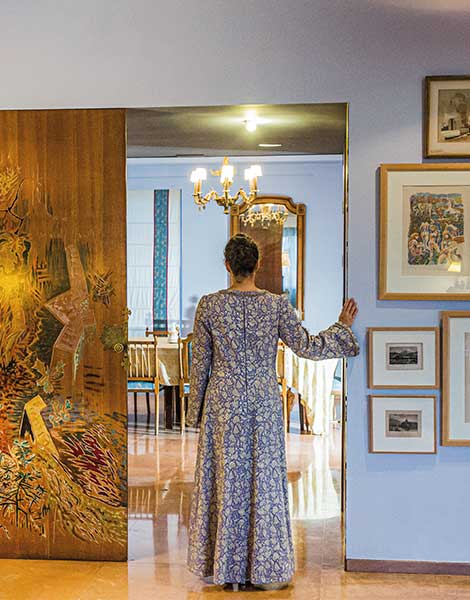
© Dimitris Vlaikos
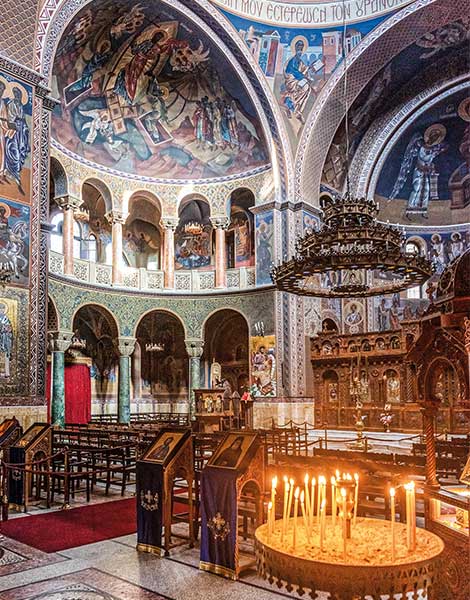
© Perikles Merakos
Patron saint, modern master
The Church of Aghios Dionysios Areopagite (Skoufa and Dimokritou) in Kolonaki is modern by Athenian standards; designed by architect and architectural historian Anastasios Orlandos, it dates from 1925. Spyros Vassiliou, one of Greece’s foremost painters of the Generation of the 1930s, painted the works in its interior. Vassiliou is known and adored for works that capture the dreamy essence of Greece; his style was so compelling that he was commissioned to create posters for GNTO, the Greek Tourism Organization, as well. Vassiliou’s works can be seen at the nearby Ghika Gallery, at the Goulandris Foundation (a destination on our next walk), and in the current “Urbanography” exhibition at the National Gallery (until 03.03.2024).
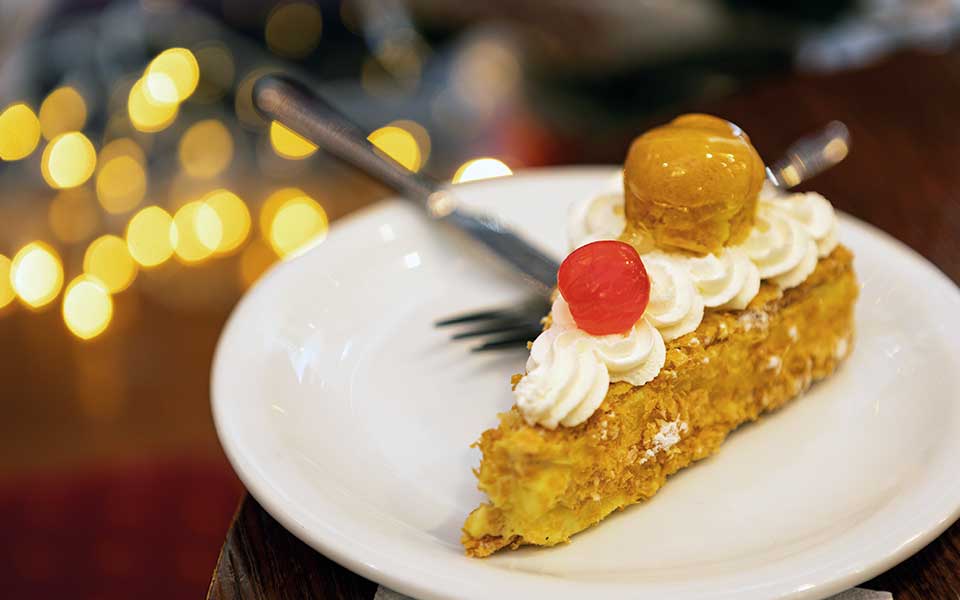
© Sofia Papastrati
Always in style
Kolonaki was the preferred district for Bavarian courtiers and wealthy Athenians; it remains a popular neighborhood today, with an air of quiet luxury permeating its streets. It’s a short walk from Syntagma Square and the Hellenic Parliament building, originally the royal palace (von Gärtner, 1843). Kolonaki’s past and present come together at the Allouche-Benias Gallery (1 Kanari), one of the city’s leading international contemporary art galleries, housed in Ernst Ziller’s sumptuously restored Deligiorgi Mansion.
Classic tastes still sway in Kolonaki; going out for pâtisserie-style, cream-filled cakes was once very fashionable throughout the city, and this tradition lives on at the pleasingly retro Désiré (6 Dimokritou), a neighborhood institution since 1962. Stopping in for a gâteau Saint Honoré or profiterole, or perhaps a slice of quiche for a savory option, makes for a pleasant break before our next stop.
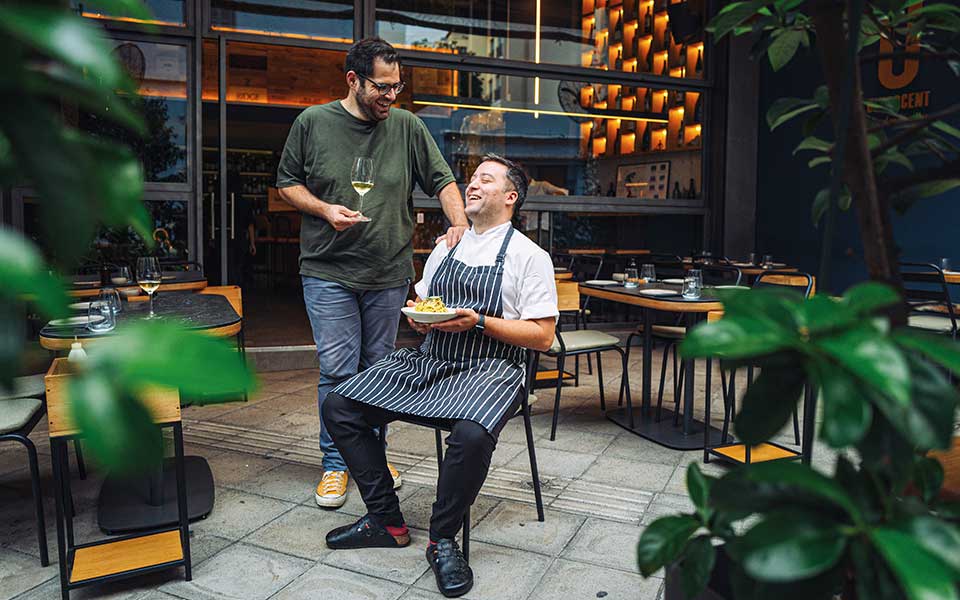
© Perikles Merakos

© Benaki Museum, Ghika Gallery
The Inner Circle
In the early to mid-20th century, the intellectual and cultural life of Athens was flourishing, as those who became known as the “Generation of the ’30s” – painters, architects, writers, and artists – created contemporary expressions of ‘Grécité’ (“Greekness”) and added to the Greek contribution to the modern cultural landscape. Henry Miller captured the moment in “The Colossus of Maroussi,” recounting his encounters with the poet Seferis, the writer and intellectual Katsimbalis (the “Colossus” of the title), and the painter Ghika, among many others. The home and studio of Nikos Hadjikyriakos Ghika is now the Ghika Gallery of the Benaki Museum (Fri, Sat 10:00-18:00, 3 Kriezotou, benaki.org). Artworks, photographs, correspondence, and artifacts on display on the lower floors document Greece’s enormous cultural output between the mass arrival of refugees from Asia Minor in 1922 and the beginning of the military dictatorship in 1967. Ghika’s home and studio are on the upper floors; the living area, so modern in its elegant use of concrete, was the site of many an engaging conversation that shaped the cultural landscape of Greece.
These were also the social circles of the pioneering psychiatrist Angelos Katakouzenos and his wife, the writer (and member of the Greek resistance in WWII) Leto Katakouzenos. Their art-filled apartment – whose collection includes a portrait of Mrs. Katakouzenos by Chagall – was a meeting place for the most dynamic minds of the era, including Camus and Faulkner, as well as Nobel laureate poets Seferis and Elytis. The apartment is now a house museum; the Angelos and Leto Katakouzenos Foundation (4 Amalias) welcomes visitors by prearrangement on Tuesdays and Wednesdays at 6 p.m. ([email protected]).
Nearby Oinoscent (45 Voulis) serves a fine selection of Greek and international wines by the glass. They also offer artisanal cheeses, charcuterie, and a seasonal, locally focused bistro-style menu.
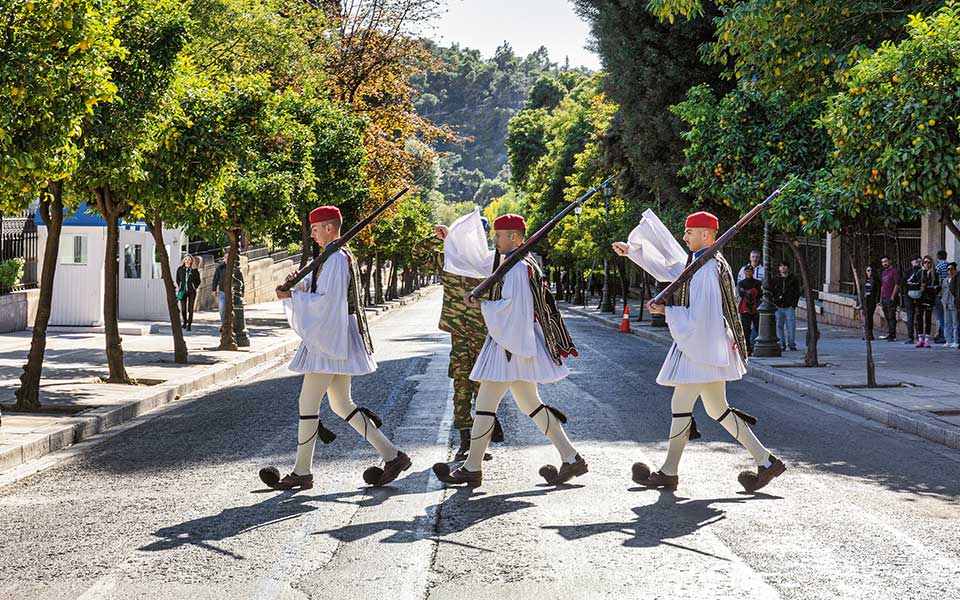
KALLIMARMARO
The 900-meter walk from the Benaki Museum of Greek Culture to the Basil & Elise Goulandris Foundation connects a number of significant cultural institutions and covers Athens’ most prestigious street. Our walk begins at the Benaki, housed in a mansion enlarged for the Benaki family by architect Anastasios Metaxas; the museum provides an excellent overview of Greek culture with exhibits spanning prehistory through the 20th century. Directly across Vasilissis Sofias Avenue (and bordering the National Gardens) begins Irodou Attikou Street, home to the Maximus Mansion – the offices of the Prime Minister – and the Presidential Mansion, initially designed as a palace for Crown Prince Constantine by the architect Ernst Ziller.
Irodou Attikou is home to another Greek institution – the Evzones, Greece’s elite Presidential Guard, whose traditional costume features the kilt-like “fustanella” of 400 pleats (symbolizing the years of Ottoman occupation). The most famous place to witness the Presidential Guard is among the crowds in front of the Tomb of the Unknown Soldier, opposite Syntagma Square. But here, on quiet and shaded Irodou Attikou, you can witness the stylized choreography of their slow and perfectly synchronized march up close, accompanied by the sound of their “tsarouchi,” or shoes, striking the pavement.
At the end of the street, you’ll marvel at the Kallimarmaro – the Panathenaic Stadium – dazzling white under the Attic sun or romantically aglow in the evening. Ernst Ziller had originally undertaken excavating a 2nd century AD stadium built on this site, the place of the Panathenaic festival in the 4th century BC. But who better than an Olympic athlete to rebuild a stadium here? Anastasios Metaxas, an architect and Olympic marksman (he competed four times, winning a silver medal in 1906), designed the Kallimarmaro (“Beautiful Marble”) in preparation for the first modern Olympic Games, held here in 1896.
Less than 400 meters from here is the Basil and Elise Goulandris Foundation. Focusing primarily on European Art of the late 19th century through the contemporary era, its world-class collection features significant pieces by artists such as van Gogh, Monet, Theotokopoulos (El Greco), Miró, Kiefer, and many others. Superb pieces by Tsarouchis, Moralis, Takis, Vassiliou, Tetsis, Kounelis, and others provide a fine introduction to Modern Greek art as well. The museum’s more intimate scale enhances the connection with the works, individually lit to stand out against the dark walls, that the visitor feels.
Pangrati is a popular neighborhood for a sociable afternoon or evening out; only a few steps from the museum, Louvron (6 Eratosthenous) was once a traditional “kafeneio.” It retains all its original features, such as the marble tables, wooden chairs, and cozy courtyard, but now boasts a modern menu. Try the aged tsipouro, a traditional Greek spirit.
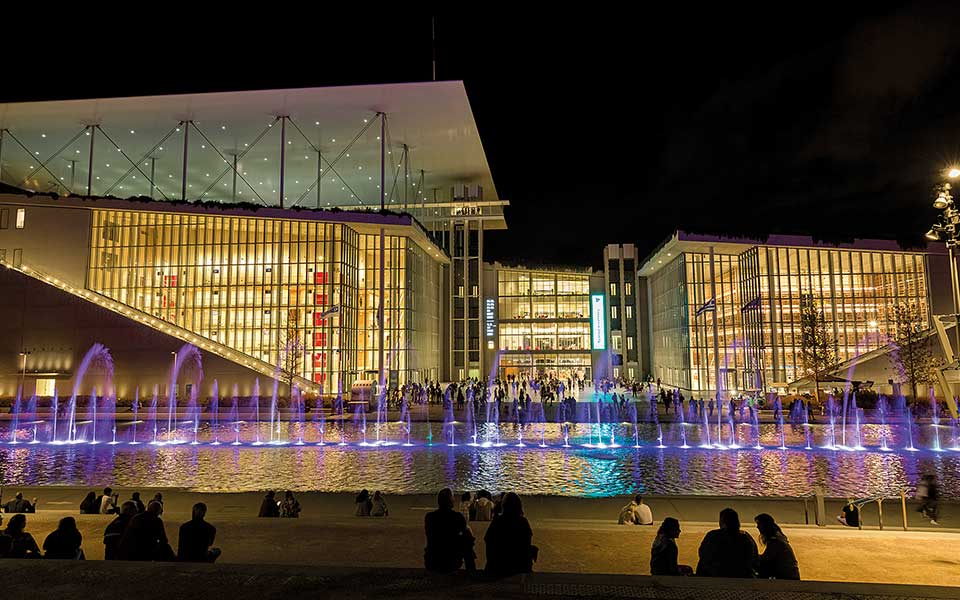
© Nikos Karanikolas
A destination in its own right – The Stavros Niarchos Foundation Cultural Center
The SNFCC, a spectacular center for culture and learning designed by Renzo Piano Building Workshop, has had an enormous impact on the cultural landscape of Athens. This complex, in the seaside district of Faliro, was designed by Renzo Piano to emphasize the relationship of the city with the sea; the “lighthouse” at the top offers panoramic views from the Saronic Gulf and Piraeus to the Parthenon, while the 400-meter-long canal is fed with water from the sea. Surrounded by one of Athens’ most extensive green spaces, the award-winning building, a model of sustainability, houses the National Library and the Greek National Opera. The GNO (nationalopera.gr) hosts opera and ballet performances, as well as concerts. The SNFCC is definitely worth a visit; keep in mind, however, that transportation is needed to get there from downtown.

